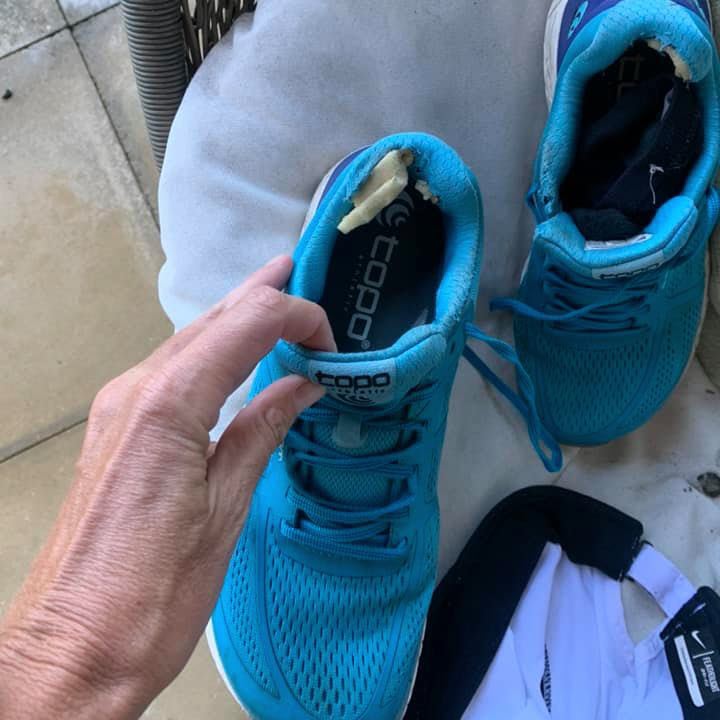I used to wear holes in the back of my shoes very quickly. While the rest of the shoe was fine, one tends to throw them out and buy new ones because they were just so uncomfortable. When this happens, the shoe lining opens up and foam spews forth. If you look closely, you’ll see the hard plastic of the heel counter. This signals the unfortunate, and sometimes premature, demise of your shoes. ? Or does it?
As it turns out, this is a very common issue. In fact, I hear from people every week with this exact issue. So let's look closer at why it happens and how you can fix it. I have to admit, this has happened to many of my walking, running and casual shoes. Thankfully, I’ve found a way to prevent it. The thing that fixed it for me was the thing I use to prevent heel blisters - which I suffer from far too easily. So I’ve killed two birds with one stone and I could not be happier about that!
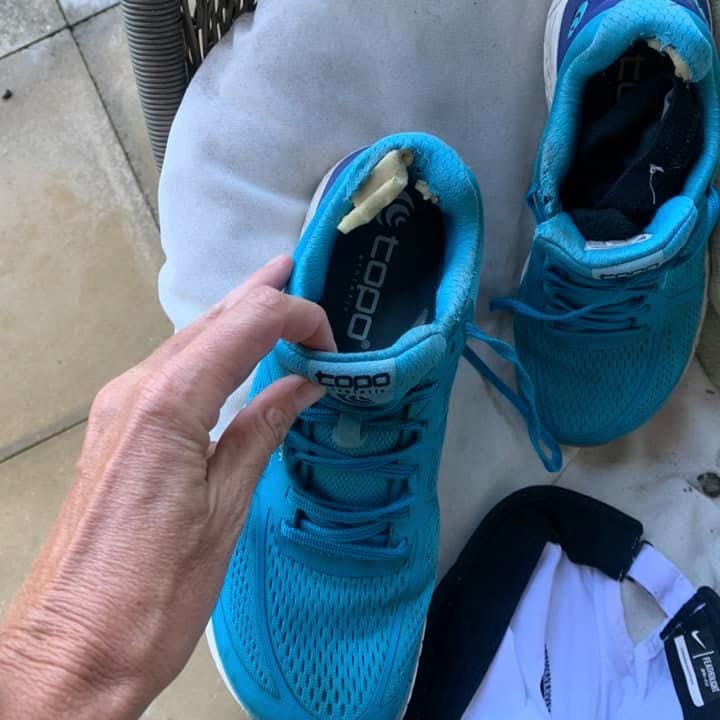
See the exposed foam at the back of the shoe
Who wears holes in the back of their shoes?
All sorts of people (young/old, male/female) during all sorts of activities (walking, hiking, running, ultrarunning, sports, activities of daily living) with all sorts of feet and biomechanics. Here are a few examples:
Hiking footwear
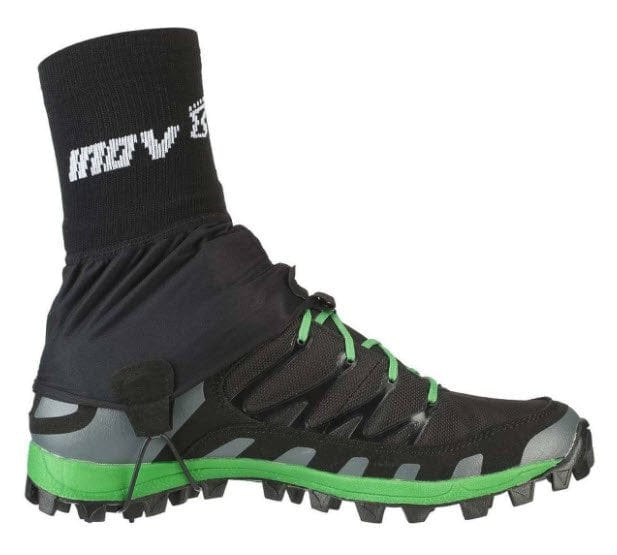
"What causes my heel to eat the padding out of the back of my shoes? Shoes too big, or too short? Or am I buying shoes with oddly shaped heel cups? Any suggestions would be great appreciated! First pair were Inov8 Rocklite 295 size 10s. Loved the shoes but ultimately had to get something with more support. I wore them for 60 miles hiking and a few short runs. My heel wore through the fabric on the heel cup and was working on the padding when I quit using them. Second pair were La Sportiva Bushidos size 42.5s (US 9.5). After wearing these for two months, including multiple day hikes, my heel had completely worn all the fabric and padding out of the heel cup. Looking into the shoe you would see the plastic frame of the heel cup through a hole the size of a quarter. In both shoes I could usually tape my heel to prevent blisters, but the shoes and socks still wear out."
Running shoes
"Why do I wear out the heels on the INSIDE of my shoes? It goes all the way to the core of the shoe where my heelbone (if that exists) touches the rear of my shoe. It basically rubs enough and wears to give me a blister. I cannot find a pair of shoes that I can not wearout? Weird that the old Nike structure Triax 8 didn't wear on me, but everything else does, Asics, Saucony, etc."
"How can I prevent my shoes from ripping in the back (in the heel linings)? So after searching this subreddit I got a fantastic pair of New Balance's, they rock. The only thing I'm worried about is what happened to my old pair of running shoes, the heel linings eventually got ruined, they kind of looked like this at one point, it's not my actual pair but the tears are somewhat similar. All I would do is run with them on the treadmill. So my question is, is there anything I can do to prevent it from reoccurring with my new pairs?"
Why does it happen?
I’m not aware of any research on this issue. However, I do have some pretty firm thoughts on potential contributing factors.
Haglund’s
There is one bony deformity that will very likely wear a hole in your shoe’s heel counter before their time is up and that’s a Haglund’s deformity. Better known as “pump bump”. Essentially, there’s an extra lumpy bit on the back of your heel. This causes an increased focal pressure both on your shoe, and the skin overlying the bony protuberance. You can read more about Haglund’s here.
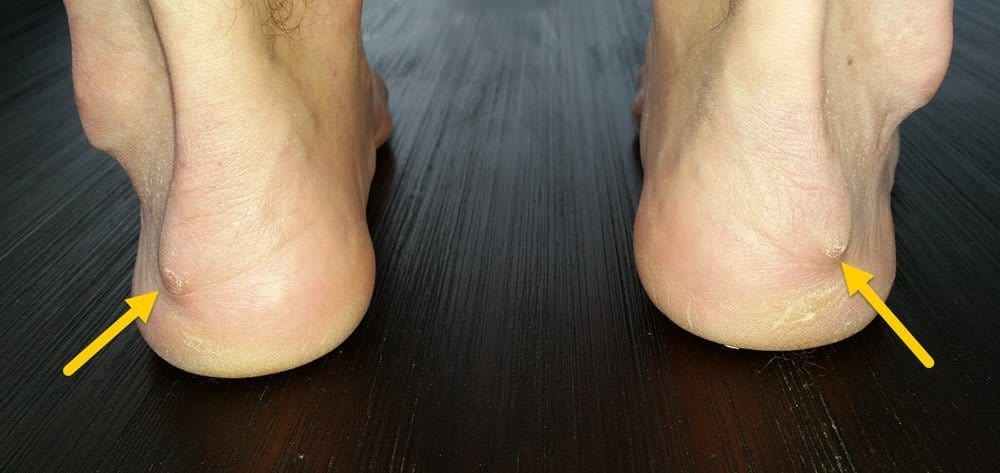
This is a really pointy Haglund’s Deformity. Others are not so pinpoint but bigger and bulkier.
Not undoing your laces
If when you put your shoes on, you force your heel over the padded heel counter with excessive force, this can wear away at the lining of the shoe. It will happen higher up at the heel collar rather than the heel counter below. This often happens when you don’t undo your laces. Just another reason to undo your laces every time ?
Heel slippage
If your heel rubs up and down at the back of the shoe, the shoe lining will likely wear out sooner than it ordinarily would. That makes sense, doesn’t it? But think just a little further. For this to happen, you’d have to have a friction situation where your sock remains in close contact and basically stuck to your skin with high friction levels. Then the abrasiveness of the sock would wear away at the shoe lining. However, as soon as the friction situation changed and your foot moved within the sock, your shoe would be saved from that abrasive rubbing. It’s almost impossible to tell what’s rubbing against what in a real-life situation, but you get my drift. Heel slippage can be involved, but it’s not always involved. If you think it is, use the heel lock lacing technique.
Stride length
It’s possible that there is more force exerted to the shoe lining at the back of the heel with a longer stride length compared to a shorter stride length. Imagine stepping forward only ever so slightly – impact will be mainly felt by the area under the heel. Now imagine taking a big long over-stride. Sure, the bottom of the heel still bears some force. But there’s a significant amount of force imparted to the heel counter area from the back of the heel.
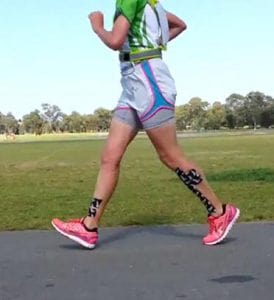
An example of grounded running with no flight phase.
Shoe lining materials
This one has to be relevant to some degree. But you’re not going to be able to tell at the shoe shop if your new shoes are more susceptible to getting holes in them or not. I’m not privy to the friction levels or durability of the different lining materials used in this part of the shoe and whether there are significant differences between shoes. Nor are the people in your shoe shop, I’m sure. But it makes logical sense that this could be involved. In terms of friction, the lining of shoes has to strike a balance between being high friction enough to provide traction for the foot within the shoe, and low friction enough to allow the sock-covered foot to slide in. Separately, I’m sure some materials are harder-wearing than others. I’ve also seen some shoes pill badly at the back of the heel.
Pronation?
I’m not buying this one. It’s mentioned a lot, so I thought I’d better include it here. But I have not seen a correlation, let alone be able to explain it mechanically.
Fixing (and preventing) holes at the back of your shoes
I’ve seen and tried several things to stop the lining wear through at the back of my shoes for both myself and my patients. Here’s what I’ve found.
Option 1: Heel-grips
These will work, they will save your shoes. Because literally, you’d have to wear all the way through the heel grip before you got to the shoe. At that point, you’d put another sacrificial heel grip on. However, heel grips won’t stop you from getting blisters. I still get blisters with heel grips, in fact, my blisters are worse. That’s because the heel grip is made from a high friction material. The clue is in the name. Grip equals high friction level. It’s similar to moleskin. Moleskin is made of cotton, which we all know attracts water and is not a good material to use in blister prevention because with a little moisture, it leads to higher friction levels.
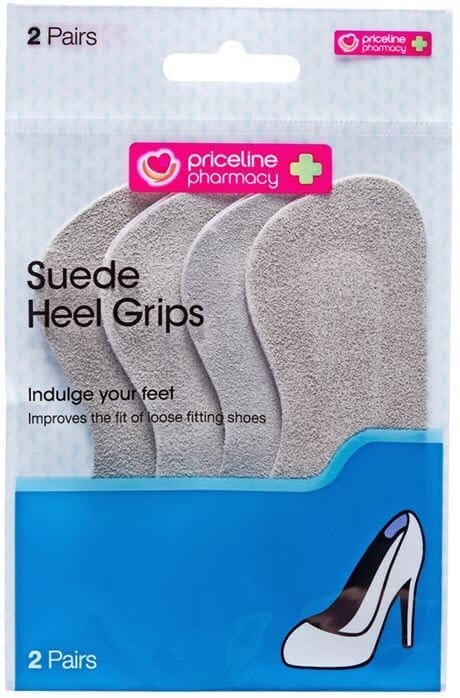
Heel grips
If your only issue is with your shoes and you’re not getting blisters, use a heel grip. If you need to save your shoe AND your skin, it’s a little more complicated.
Option 2: Denim or leather patch
This one I've personally tried in an attempt to patch the holes in the back of my shoes. I used a soft leather. Denim is also discussed in a couple of blogs here and here. Whatever material is used, it is glued and/or sewn in by a bootmaker to cover the wear area. This will surely cover the hole and give you more material to wear through before you got to the shoe lining again. But let's think about the materials mentioned here.
Denim is 100% cotton (read this about moleskin) as are most cloth materials used for this purpose. While it will give your shoes an extended life, if you’re also trying to prevent blisters, this is unlikely to work. It’s a similar (slightly different) story for leather. It didn't help my blisters at all, but gave my shoes an extended life. At this point, I just want you to remember moleskin / denim (ie: cotton) and leather for when we reach option 6 and look at a couple of graphs.
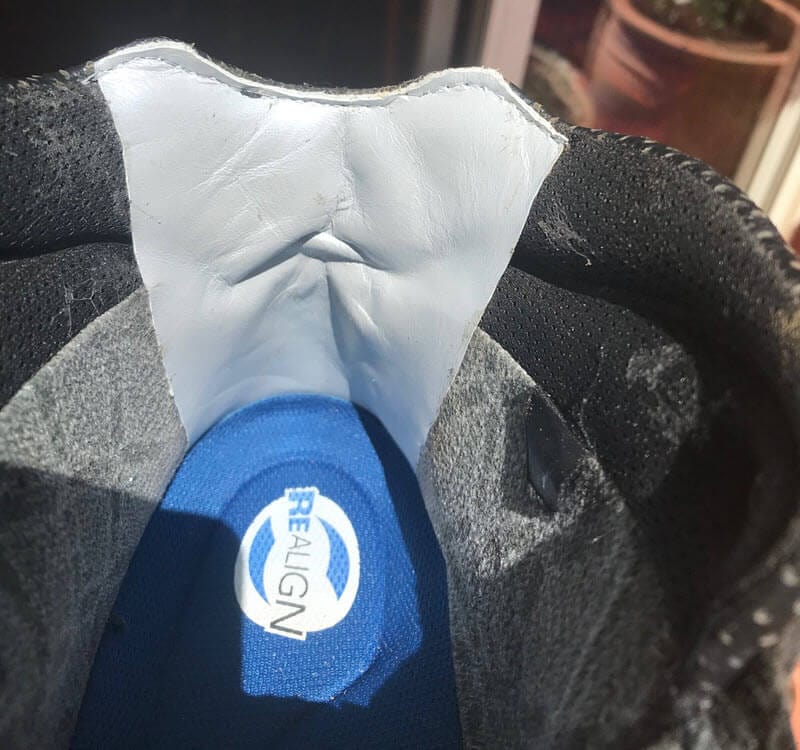
Leather glued and sewn onto the rear interior of a boot
Option 3: Fabric covered gel sheeting
The gel material used in gel toe sleeves and caps is great for preventing blisters. It can be purchased in adhesive sheets with a thickness of 5mm. You can trim a heel-grip shape and apply it to the back of your shoe, just like a heel grip. The material itself undergoes a lot of shear (internal stretching) via its low shear modulus. This means the skin is spared of some shear that could lead to blisters. I’ve used this myself to stop wearing holes in my shoes, and with a few patients. The difficulty with it is that it rolls down. Due to the thickness of the material, your sock catches the top of the material too easily when you slide your heel into your shoe and the gel ends up rolling down. It can also wear out quickly in the presence of a Haglund’s deformity. It’s unfortunate because on the face of it, this material holds a lot of hope. However, fear not, because better options and the clear winner is coming up.
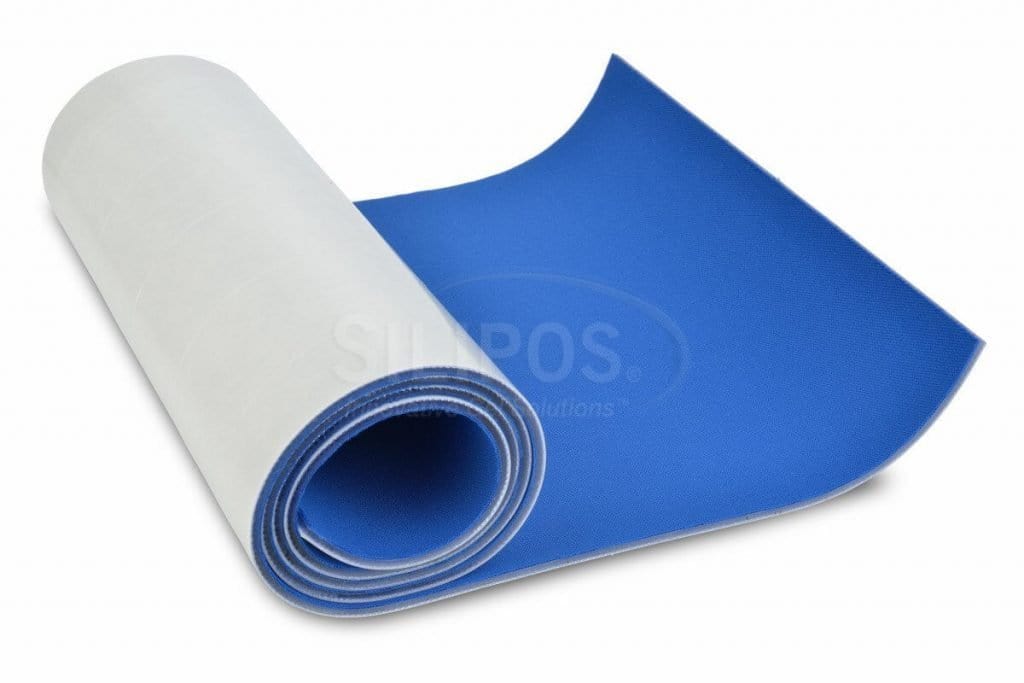
Silipos gel sheeting - can be cut to any shape
Option 4: Duct tape
Forget paper tape, Fixomul or Elastoplast. Duct tape is by far the best tape to use to cover any holes. It presumably has lower frictional properties compared to other tapes (though I can’t for the life of me find any Coefficient of Friction stats) and is hard-wearing, no doubt. But you’ve got to avoid folds and creases like the images below. These areas of high focal pressure will irritate the skin. Easier said than done, I know.
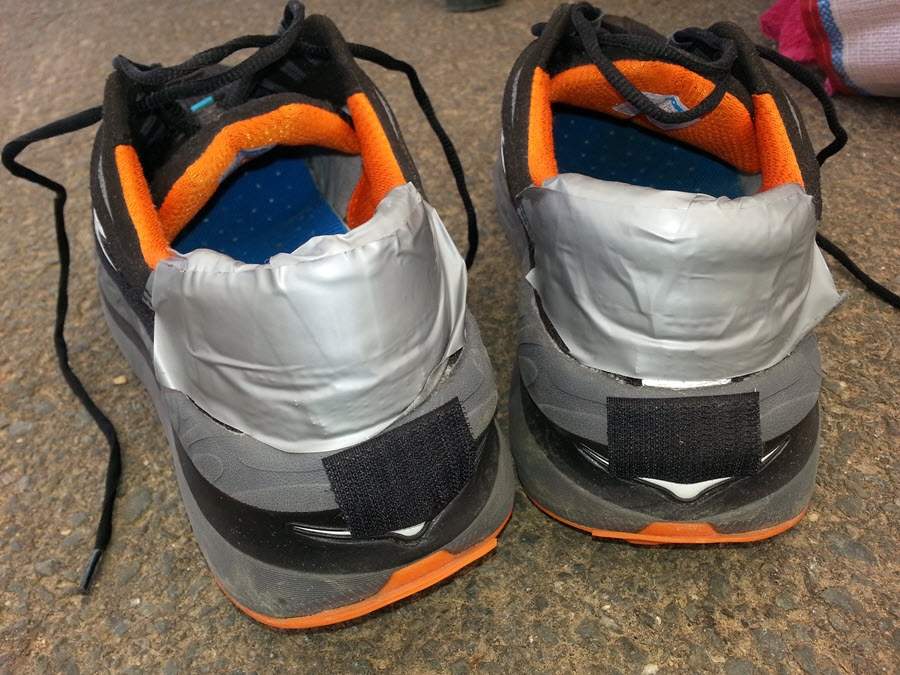
Duct tape to fight holes in the back of running shoes
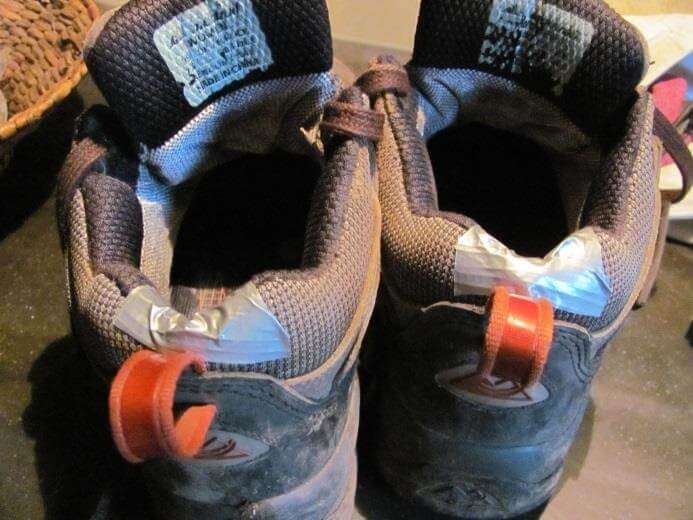
Using duct tape at the back of the shoe/boot - avoid creases and folds to prevent skin trauma
Option 5: PelliTec Blister Prevention Pads
PelliTec Blister Prevention Pads are relatively new and offer an almost perfect solution to preventing this wear, and patching over holes in the back of shoes. For a full wrap-up of our testing of this product, please read Testing PelliTec Blister Prevention Pads.
Option 6: ENGO Blister Patches
ENGO Blister Patches are blue adhesive stickers, purpose-made for sticking to the shoe lining to prevent blisters. They are a brilliant form of blister prevention, thanks to the very low friction material that coats them. It’s called PTFE and it’s known to have a very low friction level. Teflon is made from the same PTFE material. ENGO Patches have a COF under 0.2 in both dry and damp conditions. Take a look at the graphs below. Note the friction levels for moleskin and leather.
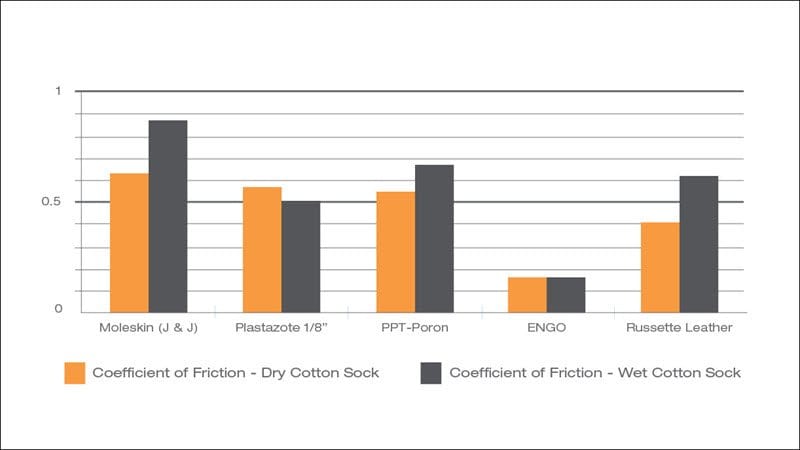 ENGO’s coefficient of friction remains low in the presence of moisture - Carlson (2001)" style="float: none;">
ENGO’s coefficient of friction remains low in the presence of moisture - Carlson (2001)" style="float: none;">
ENGO’s coefficient of friction remains low in the presence of moisture - Carlson (2001)
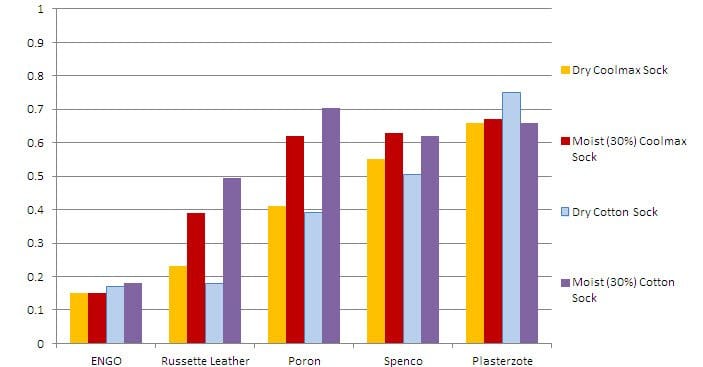
Coefficient of friction data in dry and moist conditions - Payette (2010)
You apply ENGO Patches to your shoe just like a heel-grip. They're much thinner than a heel grip and so this makes it easier to avoid catching the top of the patch as your slide your heel into your shoe. However, some care is still needed. Read this how-to for applying ENGO Patches to your footwear. They prevent wearing at the back of your shoe spectacularly! They are surprisingly hardy, lasting months and months at a time (or over a year in my case). You can also use them to fix existing holes, like I did here on my father-in-law’s shoes (below). I just pushed all the foam back into place, folded the edges of the worn lining back down as best I could, and popped an ENGO Patch over it to cover it all up. I used a large oval here from the ENGO 4-Pack, but you can also use the heel patches of course.
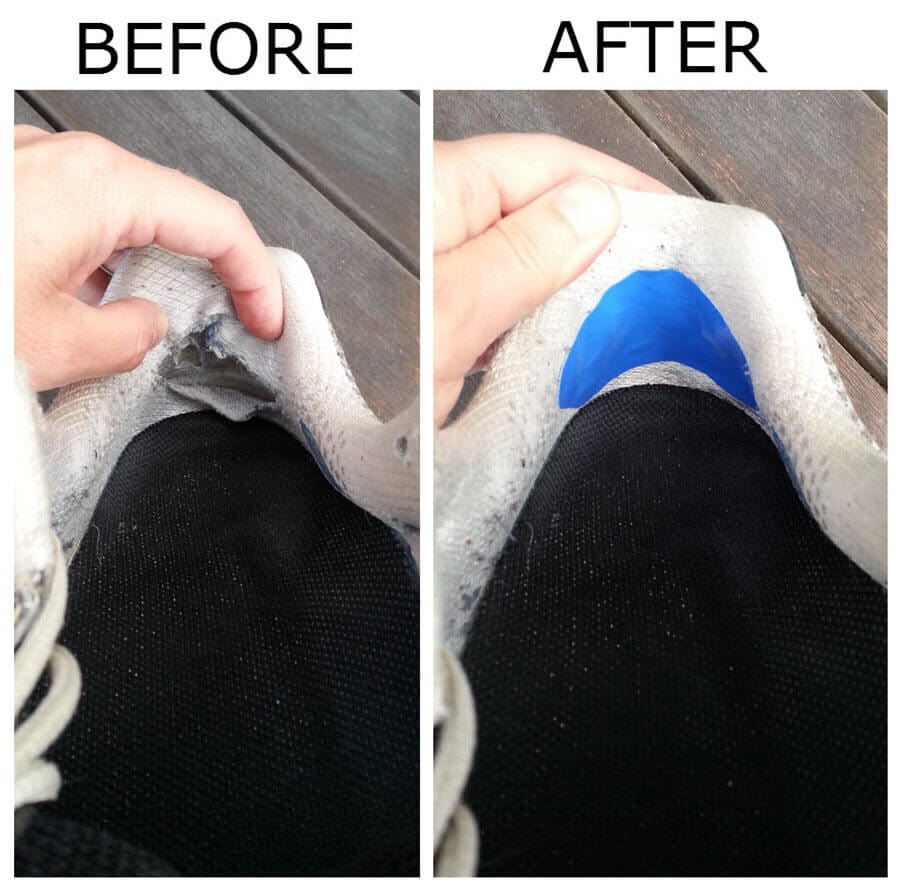
Using an Engo patch to cover a wear hole at the back of the shoe
How To Get Started With ENGO Heel Patches
See below and click "view product" to learn more about where to buy these shoe patches.
References
- Carlson JM. 2001. The friction factor. OrthoKinetic Review. 1.7 Nov-Dec: 1-3.
- Payette M. 2010. Friction management for diabetic foot problems. Presented at the 36th Annual Meeting and Scientific Symposium of the American Academy of Orthotists and Prosthetists.
